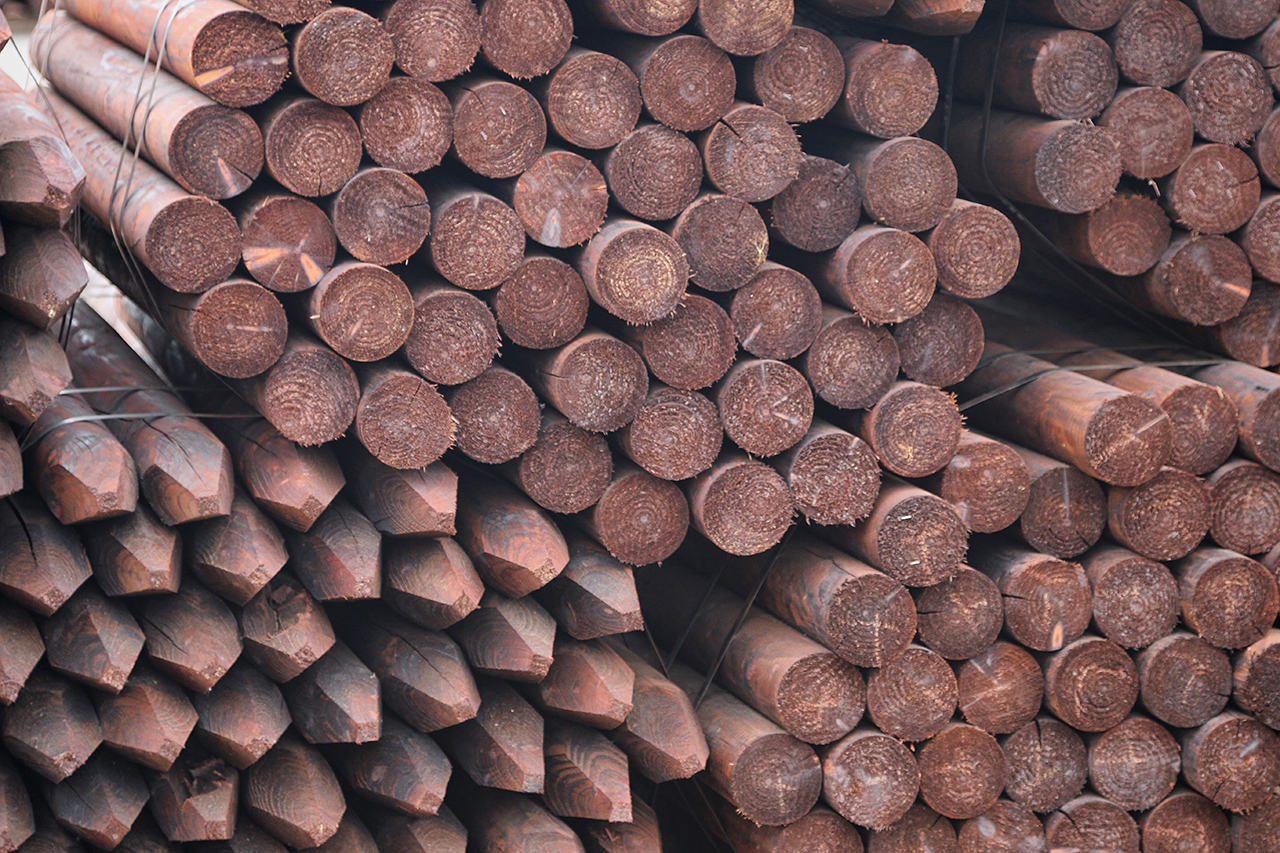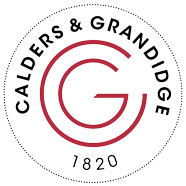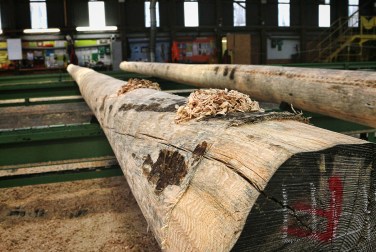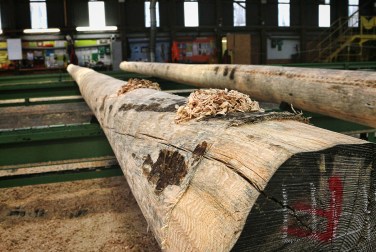Calders & Grandidge uses cookies to deliver superior functionality and to enhance your experience of our websites. Information about our cookie policy can be found here.
Continued use of this site indicates that you accept this policy.
Uses of Creosote

A Calders & Grandidge / Wood Protection Association Guidance Note
100% Coal Tar Creosote has been used for over 150 years to impart reliable service life to timber in many uses. Improved safety rules on the sale and use of creosote and creosote-treated timber were introduced in The Creosote (Prohibition on Use and Marketing) (No. 2) Regulations 2003 (“The Regulations”) which implemented European directive 2001/90/EC and applied in the UK from the end of June 2003. The Wood Protection Association and its members afford the safety of the public and that of people working in the industry the utmost importance and fully support the principles and objectives set out in the directive. To this end, association members have closely monitored developments preceding the adoption of the directive and already supply and use formulations of creosote that comply fully with its requirements well before it comes into force.
Creosote composition
The Regulations introduced new lower limits for certain constituents of creosote to improve safety. Creosote is supplied in two grades with viscosity suited to either non-pressure application (typically brush or dip) or (as is in use at Calders & Grandidge) vacuum-pressure application at elevated temperature in treatment plants.
Use of creosote
The provisions of the Control of Pesticides Regulations 1986 (as amended) (CoPR) govern the use of all wood preservatives including creosote. The regulations impose duties on professional and industrial users.
Creosote for non-pressure application
- DIY products (HSE code WA): The UK Health and Safety Executive announced that approval for sale and supply through retail outlets would be withdrawn from 30 April 2003. Therefore from 1 May 2003 there should have been no further sale or supply of creosote through DIY outlets (unless being supplied to professional users in 20 litre or larger containers – see below). DIY users were supposed to have used up any creosote they held by 30 June 2003. It has been illegal for such persons to keep creosote after 30 June 2004. Many local authority amenity waste disposal sites offer facilities for disposal of unused DIY pesticides.
- Professional products (HSE code WP): Creosote (and other preservatives) in containers larger than 5 litres should only have been available to professional users since the introduction of CoPR in 1986. From 30 June 2003 creosote should only have been supplied in 20 litre or larger containers. Such containers must carry the additional warning: “For use in industrial installations (interpretation: timber treatment plants) or by professionals.
A professional user is one who uses a product in the course of his or her business and he/she then becomes subject to the raft of health and safety legislation covering employees including the CoPR rules on competence of users and provision of information, instruction and training by employers. CoPR rules for non-agricultural pesticides like wood preservatives do not include a requirement for certificates of competence to be held by those who apply such products unlike agricultural pesticides where certificates of competence are required. The WPA publishes guidance on standards of training for users of wood preservatives developed in consultation with the HSE.
Creosote for industrial use in vacuum pressure plants
Other than the composition and labelling requirements mentioned above there should be no change in the conditions of approval of industrial grade creosote (HSE code WI) typically used at elevated temperature in vacuum pressure plants to treat poles, sleepers and fencing. Persons working in this sector are covered by the same health and safety rules as professional users. The WPA publishes a Code of Practice for Timber Treatment Plants developed with the Environment Agency and the Health and Safety Executive. Plant operators can be trained in accordance with the WPA’s training standards and can achieve a National Vocational Qualification developed by the association with the Construction Industry Training Board and City & Guilds.
Selling/supplying creosoted timber (“placing on the market”)
Wood treated with creosote prior to 30 June 2003 may, without restriction, be placed on the second hand market for re-use (typically old railway sleepers).
Wood treated or re-treated (in any way) with creosote before or after 30 June 2003 and placed on the market for first time use, may be placed on the market but only for industrial and professional use.
However, although it is the user’s responsibility to comply with the restrictions on the use to which creosoted timber is put, WPA recommends creosoted timber should be supplied with user guidance – see ‘Advice to sellers/suppliers of creosoted timber’ below).
Using creosote-treated timber
Wood already in use before 30 June 2003 is not affected by the restrictions on where creosote treated timber may be used. It may remain in use until the end of its service life.
Wood treated with creosote prior to 30 June 2003 and placed on the market for second-hand use (typically old railway sleepers) may be used (by DIY, professional and industrial users) in any situation apart from those listed below under ‘Restricted uses’.
Wood treated or re-treated (in any way) with creosote before or after 30 June 2003 and placed on the market for first time use can be used for professional and industrial uses in any situation apart from those listed below under ‘Restricted uses’. The directive gives examples of professional and industrial uses that include on railways, in electrical power transmission and telecommunications, fencing, agricultural purposes (e.g. stakes for tree support), harbours and waterways. (Interpretation: thus, apart from the specific situations listed below, timber installed by professional or industrial users may be used in virtually any situation, subject only to the Restricted Uses list.)
Restricted uses
Since 30 June 2003 creosoted timber (all forms) may not be used:
- inside buildings
- in toys
- in playgrounds
- In parks, gardens and outdoor leisure facilities where there is a risk of frequent skin contact*
- in the manufacture of garden furniture such as picnic tables
- for the manufacture and use and any re-treatment of:
- Containers intended for growing purposes
- Packaging that may come into contact with raw materials, intermediate or finished
- Products destined for human and/or animal consumption,
- Other materials which may contaminate the products mentioned above.
Most of the specific situations listed above, e.g. toys, garden furniture, are in any case not suitable for creosoted timber due to risk of staining clothing from contact with any creosote there may be on the surface.
*The DTI has published guidance on what frequent skin contact means: “Frequent could be defined as “happening or occurring often or at short intervals”. In the context of the creosote directive, frequent skin contact could be considered as repeated (habitual) contact of the skin with, for example, creosote-treated railway sleepers. Habitual practices such as constant sitting, leaning against, laying on; walking on creosote-treated wood could be considered as frequent skin contact if there is no barrier between the skin and the treated wood. A person constantly handling creosote treated wood, especially without gloves, as part of their job (daily routine) could be said to be making frequent skin contact with creosote”.
Advice to sellers/suppliers of creosoted timber
Sellers/suppliers of all forms of creosoted timber are advised to pass on guidance to their customers on the use of their product(s). They must take responsibility for the advice they give. The following is offered only to help in developing such guidance and is aimed at the consumer (and hence relevant only to second-hand uses) rather than business user. This advice could be given on a label affixed to each piece or bundle of creosoted timber and/or in a leaflet supplied with each purchase.
This timber is treated with 100% Coal Tar Creosote. 100% Coal Tar Creosote has been used for over 150 years to impart reliable service life to timber in many uses.
Avoid contact with skin. Handle with gloves. Wear a dust mask and eye protection when sawing or machining. Dispose of off-cuts, sawdust etc safely. Waste wood may be disposed of by burning subject to any local rules on burning in the open or via your local waste disposal facility.
Creosoted timber should not be used where there is risk of frequent (i.e. often-occurring, habitual or constant) skin contact nor where it may come into contact with or contaminate animal or human foodstuffs. In particular it should not be used inside buildings, to make toys, in playgrounds, for garden furniture or picnic tables.
Supply for business use carries certain statutory obligations with regard to product information.
Disposal of waste creosote-treated timber
Before disposal is carried out, it is good practice to consider if the timber could be reused or recycled. If so, it must only be reused in one of the permitted uses - see using creosote-treated timber above.
When creosote-treated timber reaches the end of its service life and has to be disposed of, or if any other sources of waste creosote-treated timber arise, then disposal must be according to the regulations on hazardous waste.
Waste from domestic uses such as garden fencing may use normal domestic waste disposal procedures. Waste from commercial use must be managed according to hazardous waste regulations. Creosote-treated timber may be burned for disposal in a Waste Incineration Directive (WID)-compliant incinerator, most beneficially for energy generation - heat or power. This works best for large quantities of waste timber - call the WPA for information on WID-compliant incinerators.
Guidance on reuse, recycling and waste disposal is available in the WPA Guidance Note Dealing with Treated Wood Related Waste Streams.
This Guidance Note includes the WPA’s opinion on the Regulations but is not legal advice. Companies and individuals are advised to seek advice from their own legal advisors if they are in any doubt as to the application of the WPA’s opinion to their own situation. The WPA, its employees and officers cannot be held liable for any loss or liability arising from reliance on this guidance document which is nevertheless offered in good faith.
More information
Advice is available from the WPA and on its website www.wood-protection.org
For further information please contact:
Stephen Young
Wood Protection Association
5 Flemming Court
Castleford
West Yorkshire
WF10 5HW
Email: info@wood-protection.org
Tel/Fax: +44(0)1977 558274
Copyright © The Wood Protection Association 2010




